
JAPANESE PRINTS
A MILLION QUESTIONS
TWO MILLION MYSTERIES
Ukiyo-e Prints浮世絵版画 |
|
Port Townsend, Washington |
| UTAGAWA KUNIYOSHI |
| 歌川国芳 |
| うたがわくによし |
| 1797-1861 |
| Series: 108 Heroes of the Suikoden |
| Suikoden gōketsu hyaku-hachi-nin |
| Subject: 9 of the heroes of the Suikoden |
| Date: Ca. 1830 |
| Signed: Ichiyūsai Kuniyoshi ga |
| Publisher: Kaga-ya Kichiemon |
| 版元: 加賀屋吉右衛門 |
| はんもと: かがや.きちえもん |
|
Print Size: 14 7/8" x 10" |
|
SOLD! |
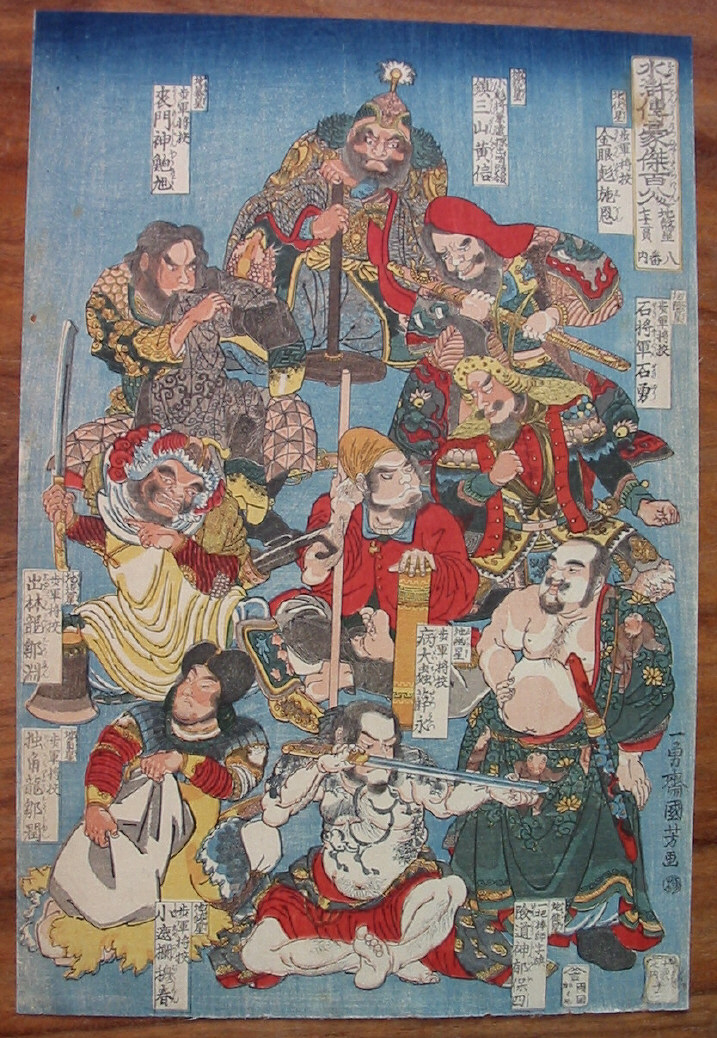 |
||
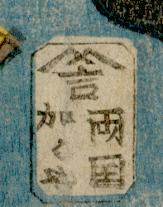 |
||||
|
Publisher:
Kaga-ya Kichiemon |
|
THE LANGUAGE OF ART:
or
WHAT KUNIYOSHI HAS IN COMMON WITH PICASSO AND EVERY OTHER ARTIST |
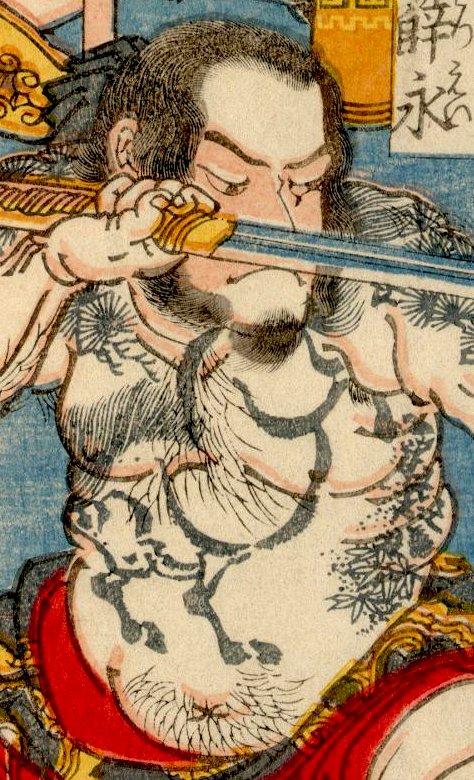 |
|
Every artist creates with his or her own specific vocabulary and grammar. This is true of even the most diverse and creative geniuses. Each of them speak with their own unique 'voice'. But what is it that distinguishes the work of Stravinsky, James Joyce, Michelangelo and David Beckham from their peers and makes them ever so recognizable to to their admirers? It isn't just their skills, but it is they way they have honed them. i.e., their vocabularies and how they use them.
For example, if you study the works of a genius like Picasso long enough you begin to see the patterns of his development and the ever so subtle repetition of motifs. Concepts he began to develop in ca. 1904-6 were abandoned only to be taken up again in the 1920s. Elements from his Vollard Suite of etchings reappear in his late but equally erotically tinged "Suite 347" of the late 1960s as do echoes of his transition period into cubism a la "Demoiselles d'Avignon" from sixty years before. |
|
|
|
WHAT DOES ANY OF THIS HAVE TO DO WITH KUNIYOSHI? PLENTY!
Kuniyoshi, like Picasso, --- and every other artist --- follows a similar pattern.
When I first posted the image of the nine Suikoden figures featured on this page I was struck by the tattoo of the horse on the chest and belly of the man at the bottom center. While tattoos on Japanese prints tend to fascinate me anyway this one struck me as particularly unusual. Notice the placement --- the position of the head vs. the rump --- and the effort to mimic the brush work of a sumi painting. I remembered seeing another horse by Kuniyoshi in almost exactly the same pose.
Our print is dated ca. 1830 while the print of the horse shown immediately above is from a series entitled "Birds and Beasts" published approximately seven years later. So that could not be the source. However, there may be an immediate precedent in the book illustration shown below which has a definite date of 1830 in its preface. (This was generously sent to me by a contributor.) It is an from the "Ichiyu gafu" or "The Drawing Book of Ichiyu". |
|
|
|
Below is a detail from another one of Kuniyoshi's masterpieces - also ca. 1830. I don't know if we will ever know the proper sequence of these three creations. |
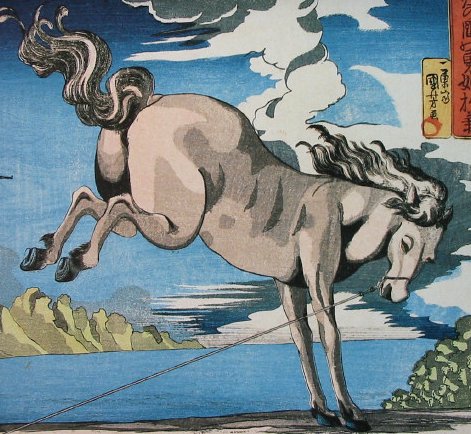 |
|
This was a motif which obviously appealed to Kuniyoshi. Several of his musha-e images include bucking horses dating all the way from the 1830s to the 1850s. While in 1851 Kuniyoshi used a caricatured blue horse on a banner in the center of a triptych showing a group of beautiful women visiting a circus. (See below.) |
 |
| Perhaps this has helped to illustrate our point adequately. We hope so. |
|
|
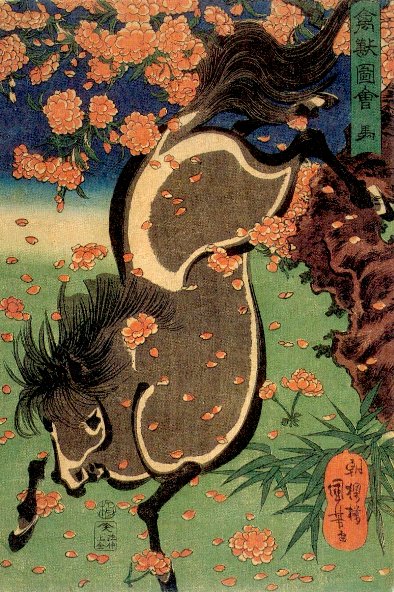
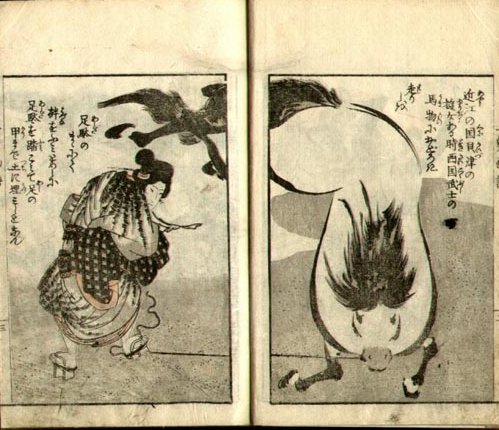
 HOME
HOME